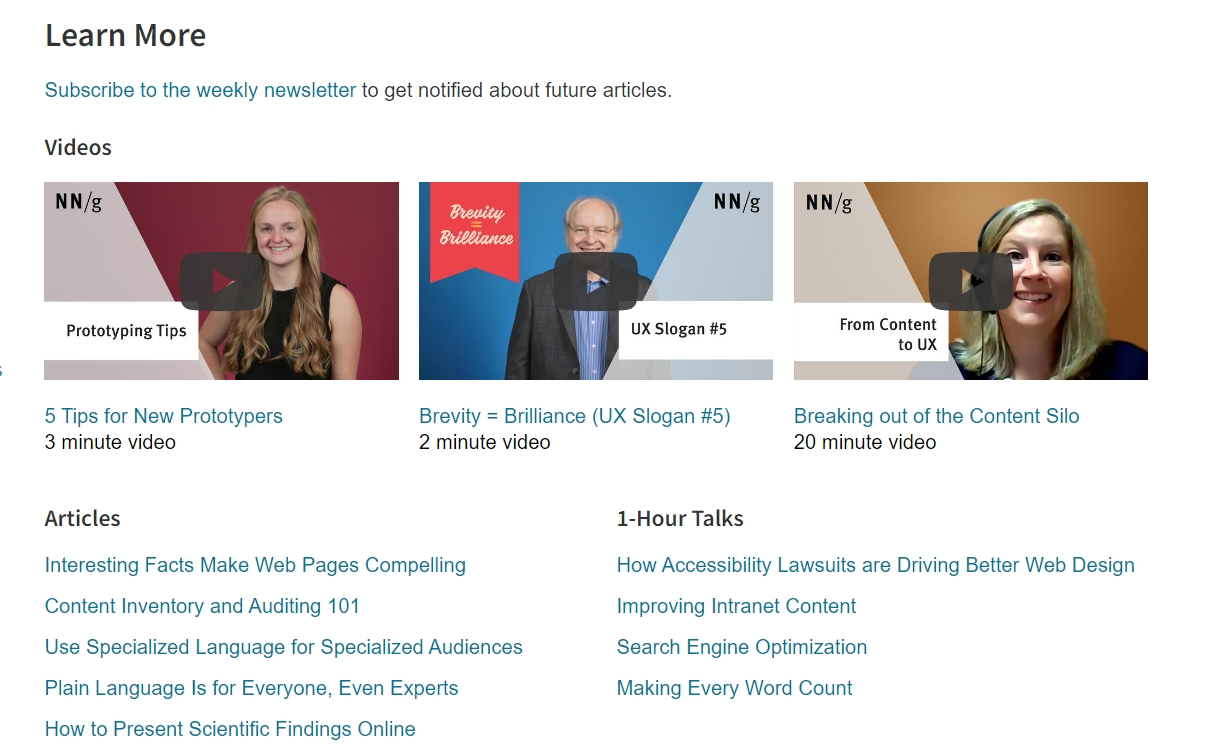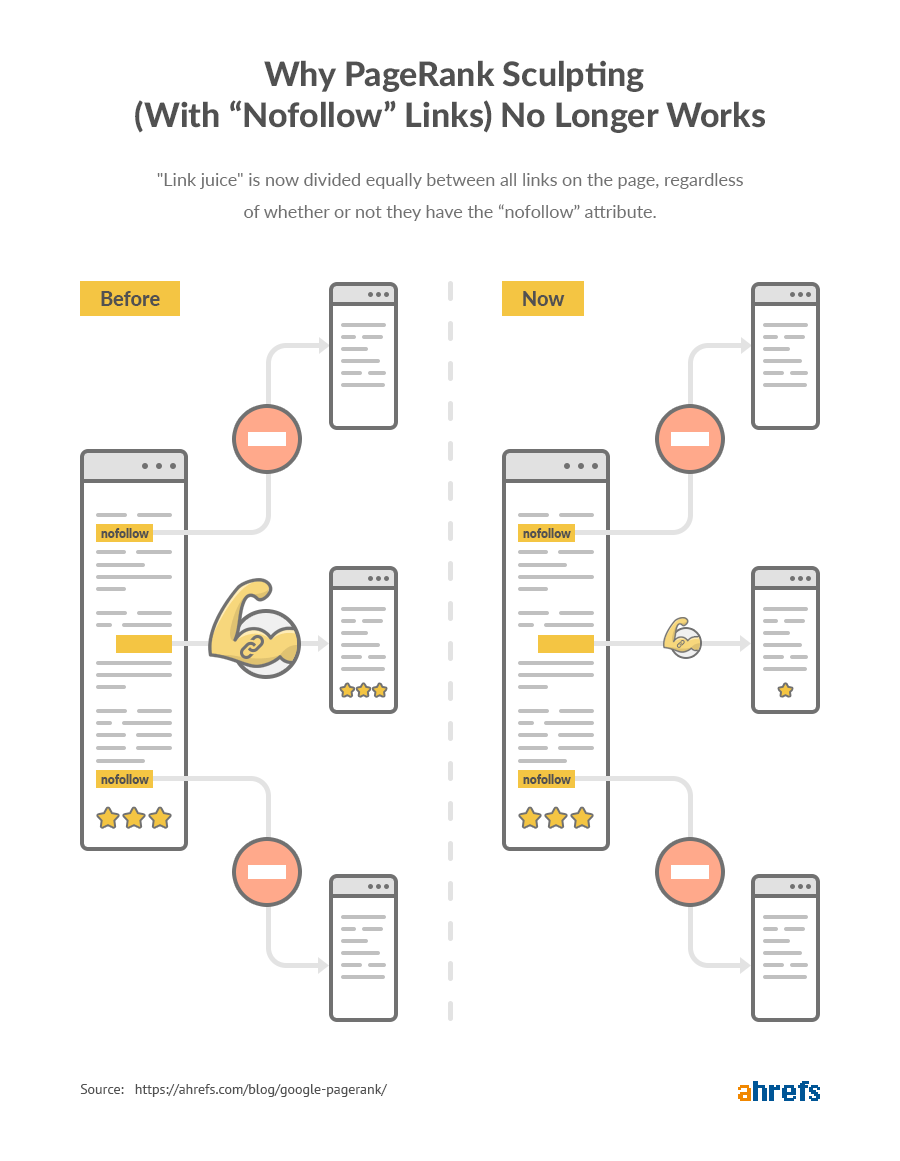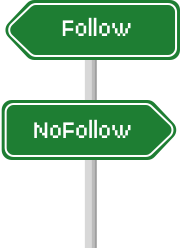This article is good for anyone who is interested in improving their Google ranking and wants to learn how to control the links on their website.
One of the most important elements of a link building strategy is link weight. You can control the distribution of link weights across pages by using dofollow and nofollow HTML attributes. Dofollow and nofollow links look the same to users, but the difference is in the HTML.
You need to understand the attributes in order to understand:
which links to third-party resources are best placed on your site;
which links are better to get to your resource through outreach, guest article exchange, buying and other ways of getting links.
Ultimately, this affects a page's ranking in Google and other search engines.
In this article we'll explain how to use attributes most effectively, and what impact they have on SEO.
Basic Things to Know About Links on a Website
What Are Incoming Links or Backlinks?
Incoming links or backlinks direct users to your site from other relevant sites. This is how other sites tell users that your project contains useful information on the same topic.
Typically, a link to a third-party site is placed to provide evidence of what you are saying, to point to the source or owner of the content, or to allow people to learn more. Exchanging links between thematically relevant resources is one way to promote yourself.

Source: http://www.internetmarketingninjas.co/
What Links Are Called Internal Links
Internal links take the user to other pages on the same site. They serve as site navigation, help the user find the right product, article or service, and help keep the user on the site.

Source: https://www.nngroup.com/
How Links Affect Seo and What Page Rank is
Google attaches great importance to a website's link profile for ranking. The presence of backlinks to a website indicates that it is useful and worthwhile.
The link profile is what determines the authority of a site and individual pages. Google has its own indicator of authority - PageRank, or PR for short. It's the "link weight" or "link juice" that the donor page gives to the destination page it's linking to. Both external and internal pages convey PR.
The page to which the significant page is linking will have more authority. If the page is four clicks away from the significant page, much less PR will reach it because of the damping factor.

The PageRank counter was public until 2014, when it was hidden to owners to avoid cheating. The indicator itself still exists and can be influenced, but it is impossible to determine the exact PR of a page.
The authority of the site consists of parameters:
the number of incoming links to the pages;
PageRank scores for each link on a page;
anchor text, context and anchor anchor
number of platforms that link to the page;
the quality of the donor sites.
The more quality inbound links your site has, the higher its authority in the eyes of search engines.
If there are a lot of "toxic" links in the link mass, they will "poison" the entire link mass and reduce the effect of quality links.
Google does not disclose the exact parameters for calculating PR, so SEOs draw conclusions from their own experience or from official Google patents.
Which links have more authority:
If a link appears at the top of the page, then it gets a higher PageRank than if it were at the bottom. Google considers the appearance of a link at the top to be an indicator of authority. A person is more likely to notice information if it is at the top of a page.
There is a personalised calculation of PageRank for each individual user. If a user has bookmarked a page or has featured it as a home page altogether, it will be given more weight in the personal PR calculation and generate more personal search results.
If the surrounding text and anchor of the link is related to the main keywords for which the linked page is optimised, the search engine can rank higher.
The higher the priority of the page in the site's structure - main, root, recently updated - the higher the resulting PageRank. This is why many SEOs try to "book" links to be mentioned on the site. In some cases, a PR boost is triggered by the fact that both sites have similar or identical geographical locations.
So, how do dofollow and nofollow relate to this?
When placing links on a website, the webmaster can tell search engine bots exactly how to behave: whether a link should be followed and indexed, or whether it should be given link weight. To do this, the link can be given rel dofollow or nofollow attributes in the HTML.
How Dofollow Links work
Dofollow links take link weight from a donor page to a linked page. A search bot can go to and index the page if the link is dofollow.
How to Use the Dofollow Tag
Strictly speaking, a dofollow tag is not necessary. Search engines consider a link to be dofollow by default unless otherwise specified, so you don't have to put a tag every time.
That link will be considered dofollow:
<a href="https://example.com">link text</a>
You can use the rel="dofollow" attribute to explicitly specify that the link should pass PageRank, but it is not necessary.
<a href="https://example.com" rel="dofollow">link text</a>
Based on the desire to give a link weight for PageRank, you decide which links should be dofollow. When it's worth leaving a dofollow link:
An important link to an internal page of your site.
A link to a site that fits the theme.
It doesn't technically matter how the link is obtained, as long as it's of benefit to readers. You may have obtained it through outreach or purchase.
How Dofollow Links Affect PageRank
The search algorithm will analyze the anchor, its textual surroundings of the link and relate this to the content of the page on the link. It is important for the algorithm to understand that the link is on-topic, contextually relevant and useful to the audience. For example, a link to a catalog of cat food is inappropriate in an article about cars, but will fit the material about the care of pedigree cats.
It is advisable to leave up to three or four pages with a dofollow tag, about 60-70%, so that it looks organic to the search bots. This way you can prioritize which links to target for link weight.
What Are Nofollow Links and How Do They Work?
The Help says: the nofollow attribute means that the site owner does not want search engine bots to follow the link and index the page. A link with nofollow does not transfer the link weight of the donor to the acceptor, there's more about that in the Help about link exchange schemes.
But:
You can't order Google to click or not to click on a link. The Help states "As a rule, nofollow links will not be clicked," but "as a rule" doesn't exactly mean never. Google bots consider such a directive as a cue, not a guide to action. That is, even with it, the search bot will be able to scan the link if it sees fit, just the link weight will not be transferred.
How to Use the Nofollow Tag
The parameter is prescribed in the following way:
<a href="url" rel="nofollow">link text</a>
You can prescribe nofollow for all links on the page. To do this in the header need to add the meta tag robots with the value of "nofollow". But more often nofollow for specific links is used to select some to pass the PR.
There are several cases where you should put a nofollow tag:
In unrelated thematically related links, which the system may perceive negatively, lowering page rankings.
In user comments or private messages so that the search engine doesn't consider likely spam. WordPress and other popular CMSs add a nofollow tag to links in comments by default.
In mentions of competitors in the marketplace, so as not to boost someone else's rankings at the expense of mentions in your own.
For links to service pages - such as registration forms.
To combat online spam, Google advises adding the nofollow attribute to blog comments, trackbacks, and referrer lists.
Google's official statement about nofollow:
"If you're a blogger (or a blog reader), you're painfully familiar with people who try to raise their own websites' search engine rankings by submitting linked blog comments like "Visit my discount pharmaceuticals site." This is called comment spam, we don't like it either, and we've been testing a new tag that blocks it. From now on, when Google sees the attribute (rel="nofollow") on hyperlinks, those links won't get any credit when we rank websites in our search results”.
Site owners used to apply "nofollow" to some links to give others more link weight. For example, if PR of a page is 10, there are 10 links on that page, if they are all dofollow, then each link will get 1 PR. But the owner could put nofollow on 5 links to give 2 PR to 5 others. Now it does not work, because Google forbade link weight distribution through the attribute. Now PageRank is divided by all links, it just won't go to those that are marked nofollow. Even if 5 links out of 10 are nofollow, each link will still only get 1 PR.

Some are worried that any number of nofollow links on a page could hurt it. According to Gary Eelsch, a Google employee, internal nofollow links do not reduce the value of the page on which they are present.
However, another search engine employee, John Mueller, advises against making all links nofollow for the sake of preserving PR. The distribution of such links relative to dofollow should be natural:
"Closing everything with a nofollow attribute is not a good idea, because it looks unnatural. Over time, it can have a bad effect on the promotion of the site. Conversely, using normal outbound links shows Google that the resource is an organic part of the World Wide Web. We appreciate it”.
How Important Are Nofollow Links for Seo Optimization
Nofollow links don't harm the page or reduce its value. But you don't need to make all links nofollow. In the long run, permanently including the tag on every link will raise suspicion. This makes the site unnatural to the system, which notices the added pages, but constantly gets banned from indexing them.
Nofollow-tagged links are not ranked by search engines, but that doesn't mean they don't affect site optimization.
Nofollow Links Bring Traffic
Even though links don't convey weight, they can be counted by search engines and be a signal relevant to the site and business.
For example, all links posted on social networks acquire a nofollow tag, but their appearance attracts new visitors interested in the material.
In 2010, Google employee Matt Katz stated that the search engine pays attention to links from social networks that are nofollow by default. And it tries to find out a little bit about the quality of the account from which the link comes. It's not about transferring link weight, but activity on these sites has an impact.
Nofollow Links Reduce the Likelihood of Sanctions and Filters From Google
Google has a "Links Dumpster" filter, which penalizes sites that sell links indiscriminately on their pages. Risky sites that have more than five external links on one page, especially if they are not related thematically. The recommendation to remove the filter is to change such links so they do not affect PR - put rel="nofollow". If the search engine considers that more than five dofollow-links do not fit the theme of the site, there will be sanctions.
Google applies "Penguin" and cancels links it considers spammy. It is advised to make the majority of links nofollow, because most sites affected by "Penguin" contain about 90-95% dofollow links. But this is not the only reason for sanctions - more important is the speed of links, their quality and the type of anchors.
How to Determine the Type of Link
Sometimes it is necessary to know from the code of the page, which links are marked as dofollow, and which are not allowed to be indexed with nofollow. There are two main ways to do this:
Manual. It is used for cases when it is necessary to calculate one or two links with their status. It is enough to open the source code of the page, reviewing it manually, or call the console for the selected fragment.
Automatic. Is used for full control of links on the entire page or site. Special tools are used for this on a paid or free basis.
The process does not take much time, so you can often get by with just the first method. For global checks with further amendments, special applications are required.
We offer to use our tool to retrieve links from any site. It only takes a couple of seconds to fully analyze the page, after which the service will provide a complete list of dofollow or nofollow links. Thus, you will quickly optimize your site by adjusting the transfer of link weight.
Conclusions
Thus, dofollow and nofollow links give you the opportunity to promote useful pages or not transfer additional ranking to competitors without violating citation rules. A competent link strategy will greatly help promote and optimize your site.
Don't stop learning about SEO. In addition to link mass, site authority is also influenced by:
unique content;
content optimization;
optimization of images;
behavioral factors;
regional optimization;
page load speed;
and many other factors.
In the following materials we will consider how to work with these parameters so that the site will be reliably established in the top of the results.
FAQ
What is dofollow?
Dofollow is an HTML attribute that allows link juice to be passed from donor to acceptor and gives a search engine permission to follow the link and analyze the page.
What does the nofollow link attribute mean?
By using the nofollow attribute, the site owner prohibits the search engine from indexing the link or influencing its ranking. At the same time, the link itself remains active, allowing the user to follow it when viewing the offered material.
How do I know if a link is dofollow?
To check if a link is dofollow, just open the source text of the page or directly highlight it and select "View Element Code". If a link has no additional attribute or dofollow tag, then search engine can index it.
How is dofollow different from nofollow?
You should specify a nofollow attribute if you don't want search engine crawlers to follow a link to the cited page. If you want to direct link juice to the page, do not specify the rel attribute, then the link will automatically be dofollow.
